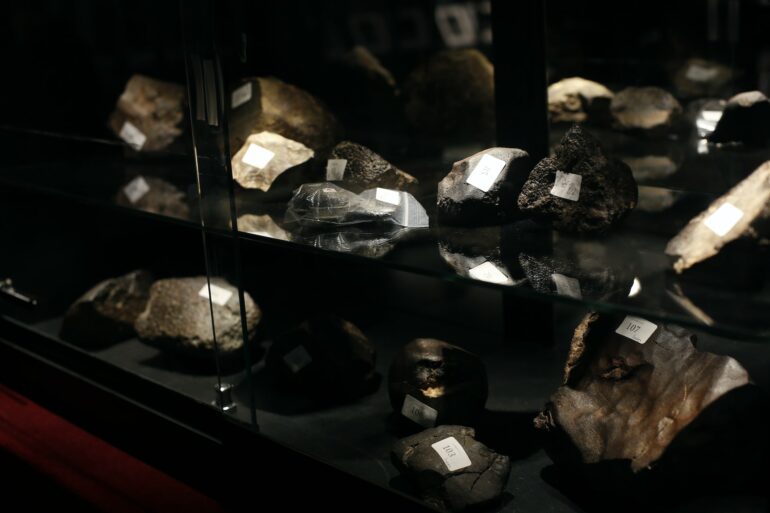After a journey of seven years and nearly 4 billion miles, NASA’s OSIRIS-REx spacecraft landed gently in the Utah desert on the morning of Sept. 24, 2023, with a precious payload. The spacecraft brought back a sample from the asteroid Bennu.

OSIRIS-REx collected a sample from the asteroid Bennu.
NASA/Goddard Space Flight Center via AP
Roughly half a pound of material collected from the 85 million-ton asteroid (77.6 billion kg) will help scientists learn about the formation of the solar system, including whether asteroids like Bennu include the chemical ingredients for life.
NASA’s mission was budgeted at US$800 million and will end up costing around $1.16 billion for just under 9 ounces of sample (255 g). But is this the most expensive material known? Not even close.
I’m a professor of astronomy. I use Moon and Mars rocks in my teaching and have a modest collection of meteorites. I marvel at the fact that I can hold in my hand something that is billions of years old from billions of miles away.
The cost of sample return
A handful of asteroid works out to $132 million per ounce, or $4.7 million per gram. That’s about 70,000 times the price of gold, which has been in the range of $1,800 to $2,000 per ounce ($60 to $70 per gram) for the past few years.
The first extraterrestrial material returned to Earth came from the Apollo program. Between 1969 and 1972, six Apollo missions brought back 842 pounds (382 kg) of lunar samples.
The total price tag for the Apollo program, adjusted for inflation, was $257 billion. These Moon rocks were a relative bargain at $19 million per ounce ($674 thousand per gram), and of course Apollo had additional value in demonstrating technologies for human spaceflight.
NASA is planning to bring samples back from Mars in the early 2030s to see if any contain traces of ancient life. The Mars Sample Return mission aims to return 30 sample tubes with a total weight of a pound (450 g). The Perseverance rover has already cached 10 of these samples.
However, costs have grown because the mission is complex, involving multiple robots and spacecraft. Bringing back the samples could run $11 billion, putting their cost at $690 million per ounce ($24 million per gram), five times the unit cost of the Bennu samples.
Some space rocks are free
Some space rocks cost nothing. Almost 50 tons of free samples from the solar system rain down on the Earth every day. Most burn up in the atmosphere, but if they reach the ground they’re called meteorites, and most of those come from asteroids.
Meteorites can get costly because it can be difficult to recognize and retrieve them. Rocks all look similar unless you’re a geology expert.
Most meteorites are stony, called chondrites, and they can be bought online for as little as $15 per ounce (50 cents per gram). Chondrites differ from normal rocks in containing round grains called chondrules that formed as molten droplets in…



